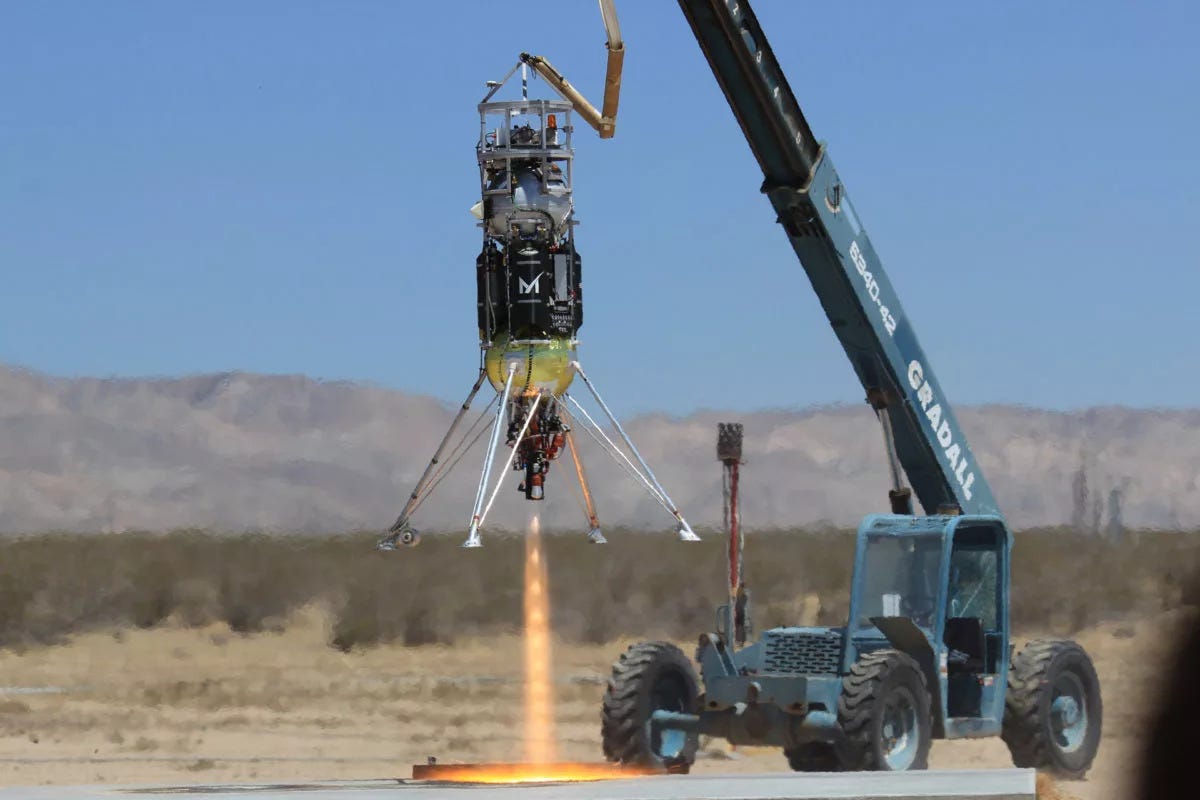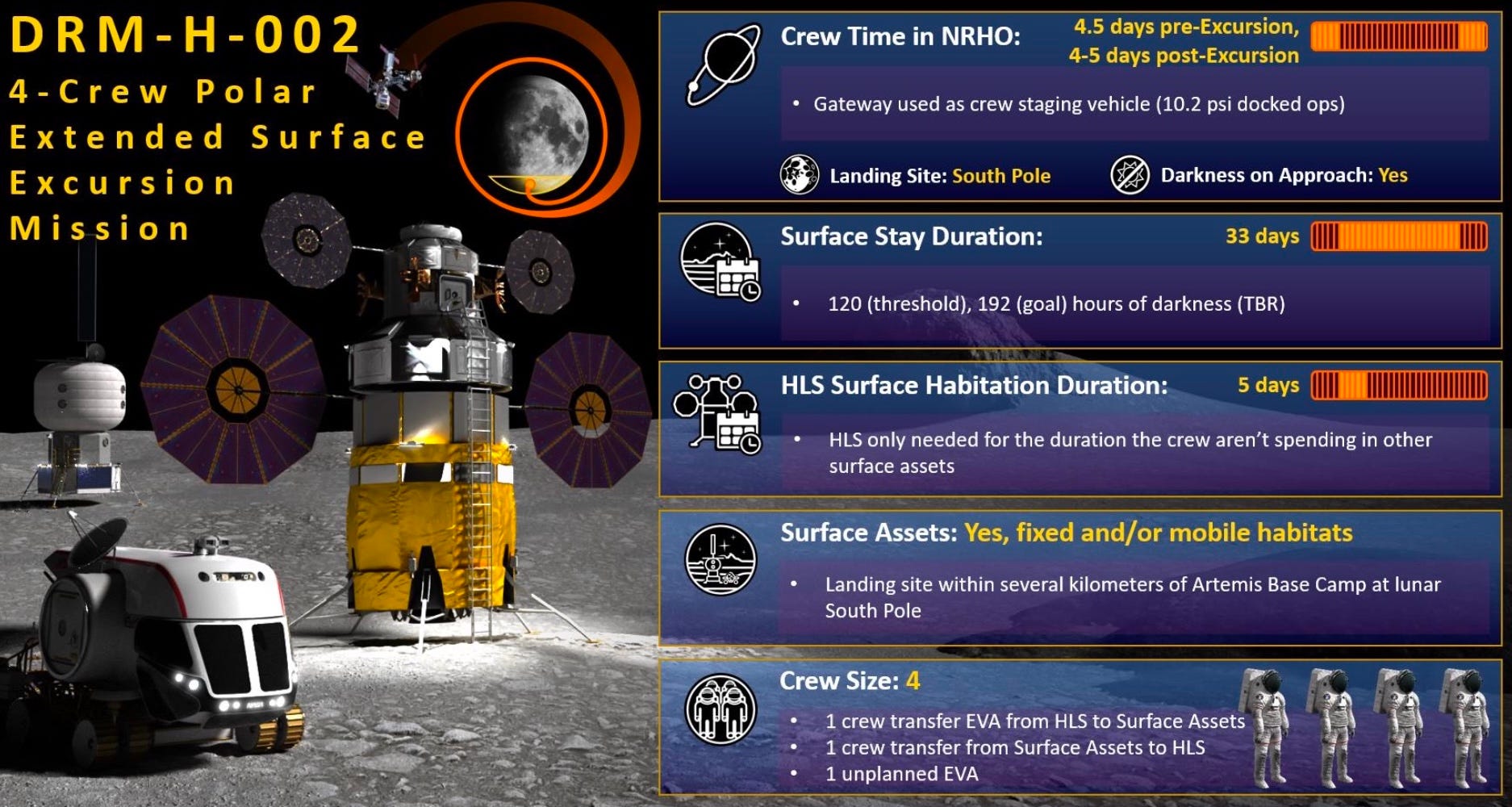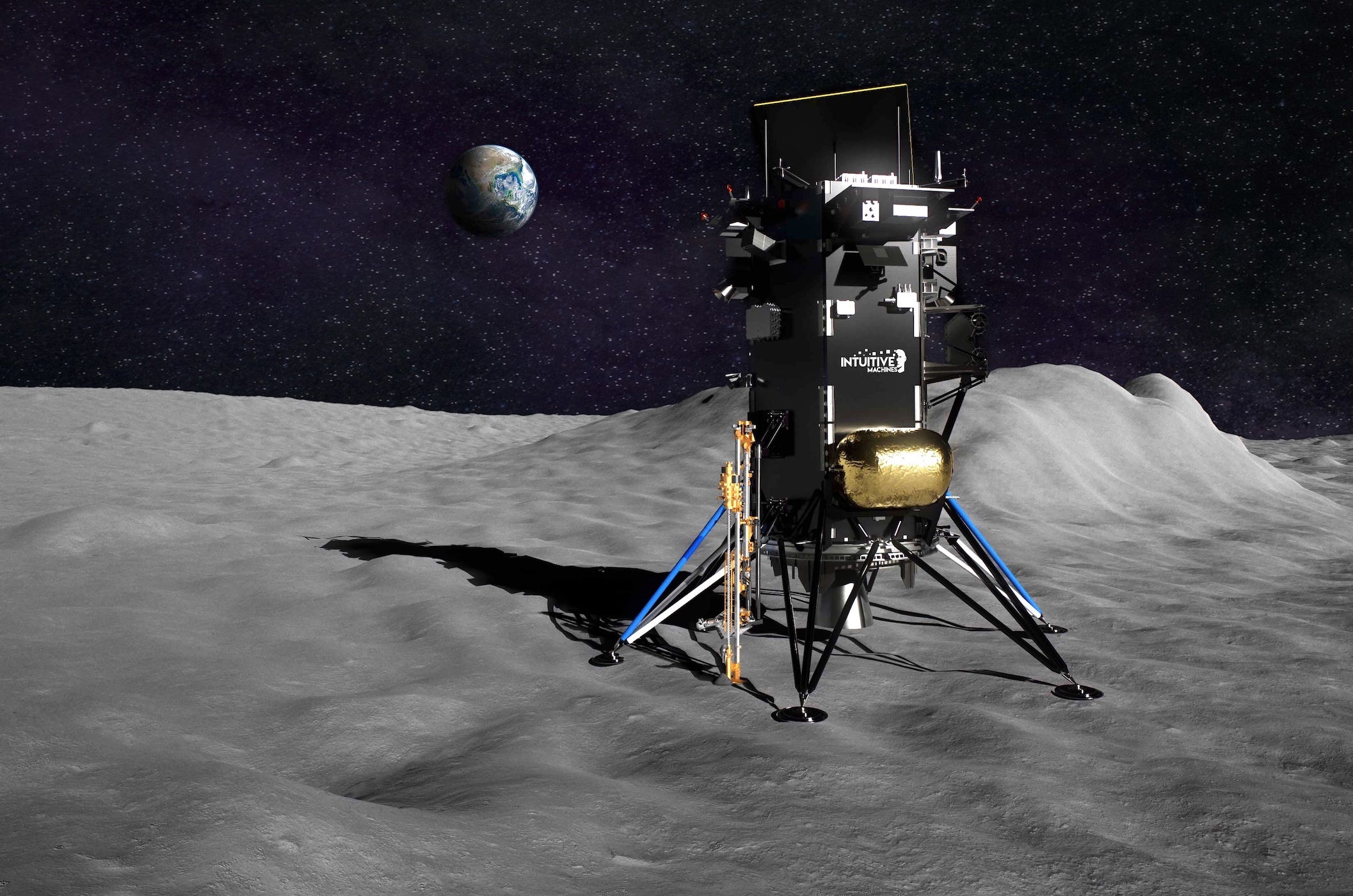Moon Monday #95: NASA seeks advanced human landers; CAPSTONE tumbles; Masten gets sold, and too many updates
I’m over the Moon to share that Moon Monday is now featured as a resource on the homepage of the Moon Village Association’s website. ^_^
Also, so much happened in lunar exploration last week that this 2000-plus-word issue is packed with exciting news updates, and lots of context and references. To the Moon!
CAPSTONE is tumbling :/
On September 8, the NASA-funded and Advanced Space-led CAPSTONE spacecraft put itself in safe mode after it detected an issue at the end of a planned trajectory correction maneuver. It turns out the spacecraft had started tumbling, was losing power, and experiencing periodic system resets but it ultimately managed to contact mission control in about a day. With help from NASA’s Deep Space Network, teams worked hard to stabilize the spacecraft enough to be power positive—generate more power via its solar panels than the system consumes—and have it send more telemetry.
Teams are now attempting to use the available power to warm up the propulsion system enough to bring it back online. This would allow attempts to de-tumble the spacecraft, regain full orientation control, accurately point the solar panels to fully charge the batteries, and thus resume nominal operations. Thankfully, since the aforementioned trajectory correction maneuver itself went as planned, CAPSTONE remains on its intended fuel-saving ballistic transfer to the Moon for orbital capture on November 13, and so a recovered CAPSTONE would mean the mission is on.
Astrobotic acquires Masten to build more for the Moon
On September 13, Astrobotic announced the acquisition of competitor Masten Space Systems, including much of its space technology portfolio for $4.5 million following a Chapter 11 bankruptcy filing. Astrobotic has also hired several of Masten’s employees, including David Masten himself, bringing the combined workforce to more than 200. The eight payloads meant to fly on Masten’s first Moon landing mission part of NASA’s CLPS program might get transferred over to Astrobotic by the agency or be distributed among multiple CLPS flights.
Astrobotic says Masten’s popular and revered vertical takeoff, vertical landing (VTVL) terrestrial rockets will not only continue enabling pre-flight testing of various space technologies but that they plan to expand the service to more companies, governments, and space agencies. Two lunar-specific technologies recently tested using Masten’s VTVL rockets are the lunar-dust-characterizing Ejecta STORM and the low-cost sampling technology PlanetVac, the latter of which is set to launch on Firefly’s first CLPS mission in 2024. Astrobotic will also continue developing the suborbital Xogdor, part of a $10 million NASA Tipping Point award, as their most advanced VTVL rocket, which will in particular enable validating a host of advanced lunar navigation and landing technologies.

Less talked about though are the trove of previously mostly NASA-funded lunar technologies Masten was developing, including a mobile rocket miner, a lunar night survival system, near-instantaneous landing pads made by future landers, and more. Astrobotic says they will continue developing these technologies. But given that Masten laid off many employees before their Chapter 11 filing, including those exclusively working on their CLPS landing, we’ll have to wait and hope for continuity. Either way, Astrobotic as a company has gotten stronger from this deal for net good.
I’d like to point out from a writer’s perspective that Masten’s blog posts related to technology milestones often had actual hardware imagery and more non-PR details compared to other similar companies, and so I hope that continues.
NASA asks U.S. companies to bid sustainable landers to keep sending humans to the Moon
In March, NASA announced a change in strategy for one of their most important pieces in sustaining human presence on the Moon—regularly ferrying Artemis astronauts to and fro the lunar surface after the first crewed landing with SpaceX Starship mid-decade.
With it, NASA extended SpaceX’s contract to co-fund another crewed landing with an upgraded Lunar Starship, which can carry 4 or more astronauts, support longer surface stays (of at least 33 Earth days), deploy more payloads, and dock with the NASA-led international Gateway lunar station. As part two of that strategy, NASA is now seeking proposals from U.S. companies other than SpaceX by November 15 for a similarly capable lander. The upgraded Lunar Starship and the competitor, to be chosen by May 2023, will bid on all future Artemis landings for fixed-price, milestone-based contracts, a model demonstrated to work well at the International Space Station.
Blue Origin, Lockheed Martin, Northrop Grumman, and Dynetics are the likely contenders for this solicitation but we don’t yet know if and how they’ll team up among themselves. NASA has provided detailed requirements for the proposals, which says the competitor must demonstrate an uncrewed and a crewed lunar landing by 2028 to certify their system for future bids. The crewed demonstration landing two astronauts on the Moon’s south pole will be similar in scope to SpaceX’s Artemis III landing. Given its launch timing, Artemis V seems its likely moniker.

Interestingly, NASA would also like the two “sustainable” landers to support short-stay two-astronaut missions at non-polar regions across the Moon, including the farside. This may sound like a minor enhancement but is huge as it would lay the foundation for landing and living on the Moon anywhere—however briefly. However, NASA is requiring even such non-polar missions to dock with the Gateway.
Moreover, as mentioned at the LEAG 2022 Annual Meeting last month, NASA plans to complement the crewed landers and help sustain & extend lunar stays post-2030 under Artemis Base Camp using what they’re calling “Human-Class Cargo Delivery Landers” or HDL. These landers, which could be built by a number of companies including SpaceX, should be capable of delivering 12,000 to 15,000 kilograms of cargo to the surface, including crew-critical supplies, scientific payloads, large rovers, habitat modules, and more. The document detailing HDL operations says that docking with the Gateway is optional for them. Phew. Additionally, HDL landers might also do cargo or robotic missions at non-polar regions.
With advanced crewed landers and human-class cargo craft for the Moon, NASA now has a public, tangible plan to meet three major high-level Moon to Mars objectives the agency released earlier this year.
Many thanks to Epsilon3 for sponsoring Moon Monday, which allows me to dedicate time to create detailed issues like this one.
The Moon-focused Intuitive Machines to go public

On September 15, Intuitive Machines announced plans to go public via a SPAC merger (🫧💥🤔) by January 2023. The company expects to raise about $300 million by doing so, which would chiefly allow starting work on the Nova-D lander, which would boast up to six times more payload capacity than the 130-kilogram capable Nova-C flying the company’s upcoming three CLPS Moon landings for NASA. Given the news, I thought it might be useful to list all lunar missions and technologies that Intuitive Machines has been tangibly building so far in one place.
Intuitive Machines’ first CLPS mission will land six NASA payloads for $77 million in 2023. Most notably, the lander’s stereo cameras will record and help quantify how rocket plumes interact with and kick off Moondust so we can better protect future surface spacecraft and habitats.
As an aside, we finally know why Intuitive Machines hasn’t yet revealed their flight lander for the mission. Eric Berger reports that the lander’s propellant tanks failed during qualification testing. The issue has since been resolved, and the lander is now in final assembly. Moreover, NASA had requested Intuitive Machines to change their landing site from near the equator to the Moon’s south pole, which necessitated more planning.
On its second Moon mission in late 2023, Intuitive Machines will deliver NASA’s PRIME-1 one-meter drill and a mass spectrometer to study water ice at the Moon’s south pole. The lander will also deploy a rover by partner Lunar Outpost to test Nokia’s 4G/LTE network. Further, there’s the company’s own NASA-supported, $41 million hopper onboard called Micro-Nova, which will jump around, including over small permanently shadowed regions, to take high-resolution images of the surface under its flight path.
Intuitive Machines’ third Moon landing will help study the magnetic swirl of Reiner Gamma in 2024 along with a rover again provided by Lunar Outpost.
As urged by NASA for CLPS, Intuitive Machines has signed multiple agreements over the last two years to get commercial Earth communications services for all of its lunar missions. Complementing it are commercial lunar data relay satellites, with the company deploying at least one of them in every Moon flight starting with their second CLPS mission.
There’s also a fourth Intuitive Machines Moon mission, not yet selected in a CLPS bid, but with at least one commercial customer and likely two more with a rideshare provider as a general customer for all possible future missions.
One of the bidders of NASA’s upcoming versatile Artemis Lunar Terrain Vehicle for astronauts is Northrop Grumman, who has partnered with Intuitive Machines to possibly deliver the Lunar Outpost-built rover via Nova-D.
In June 2022, NASA and the U.S. Department of Energy awarded $5 million to IX, a joint venture between Intuitive Machines and X-Energy, for developing an autonomous, compact and lightweight fission surface power system prototype for surviving long and frigid lunar nights as well as inside permanently shadowed regions. If selected, a flight version could launch to the Moon by end of decade.
A gentle reminder that this one-of-a-kind newsletter of mine covering lunar exploration, science, commercial and policy developments from around the world is absolutely free to access, and that I don’t display any ads. If you find value in what I do, consider supporting.
If your organization would like to sponsor Moon Monday to help keep it going while increasing your visibility to my highly enthusiastic lunatic audience, get in touch.
UAE and China partner to explore the Moon
The UAE and China announced their intent to collaborate on future Moon missions, starting with a UAE lunar rover being onboard China’s Chang'e 7 lander. Targeting launch around 2024, Chang’e 7 will consist of an orbiter and a lander, the latter of which will likely deploy a (Chinese) rover and hopper to map resources in permanently shadowed regions near the landed region on the Moon’s south pole.
The UAE is on a collaboration streak. The Rashid rover, UAE’s first lunar mission, is hitching a ride to the Moon’s surface on ispace Japan’s first landing mission later this year. Last year in October, the UAE announced partnering with Israel’s SpaceIL to potentially have one of their rovers onboard one of the two SpaceIL Beresheet 2 landers in 2024. Recall also that at last year’s Global Space Exploration Conference, UAE’s space agency revealed intents to launch lunar orbiters too, and that they are looking to partner with other agencies to send Emirati astronauts to the Moon.
More Moon
- NASA is now planning to conduct the cryogenic leak test on September 21 to verify the integrity of the newly replaced seals on the SLS rocket’s core stage, where a persistent, large hydrogen leak had forced NASA to scrub the September 3 launch attempt of the Artemis I mission to send an uncrewed Orion spacecraft around the Moon and back. If the test is successful, and NASA receives the pending approval from the Eastern Range to re-extend the battery rating of SLS’ flight termination system, the agency plans to launch SLS on September 27 during a 70-minute window starting at 11:37AM EDT. If the Eastern range doesn’t approve said ask, NASA will have to move the rocket back to its assembly building to replace the flight termination system’s batteries and target the October 17–31 launch window.
- Thomas Zurbuchen, NASA Associate Administrator for the Science Mission Directorate, has announced his departure from NASA in December. NASA’s CLPS program to send the agency’s scientific instruments and technological payloads onboard commercial landers is the brainchild of Zurbuchen.
- Scientists doing microscopic studies of lunar samples brought by China’s Chang’e 5 mission from near a volcanic dome in December 2020 have discovered a new column-shaped phosphate mineral named “Chang’esite-(Y)”.
- Eric Berger reports that the first flight engine for ULA’s Vulcan rocket had a build issue and was thus sent back in August from its test stand in Texas to Blue Origin’s factory. ULA therefore seems unlikely to launch Vulcan and therefore Astrobotic’s first CLPS Moon lander onboard in 2022. Astrobotic’s lander itself is not yet fully assembled though, but is close, and will need to go through a series of space simulating tests before heading to the launch site.
→ Browse the Blog | About | Donate ♡
